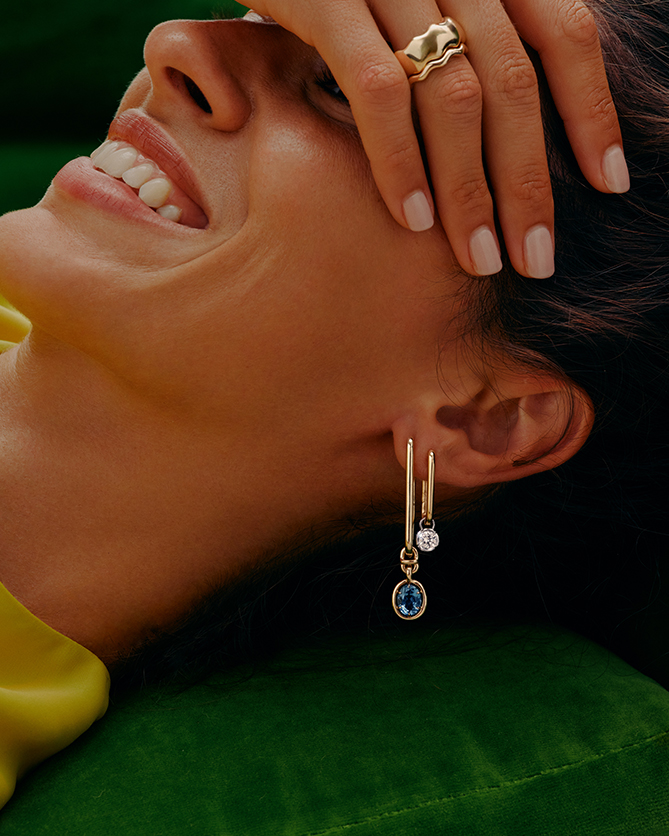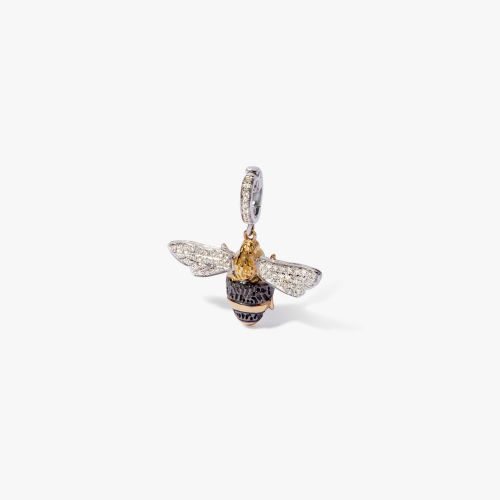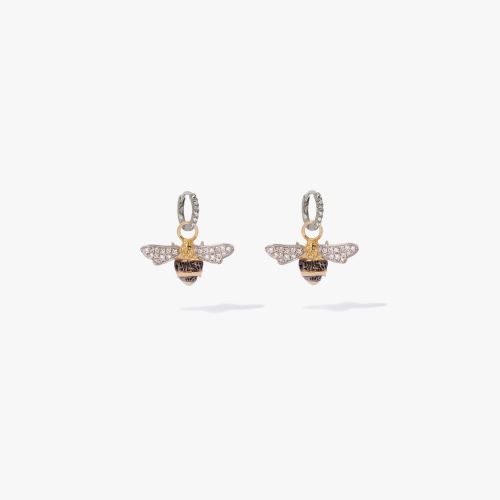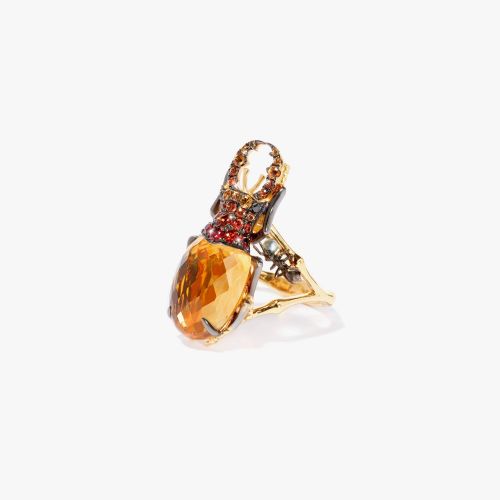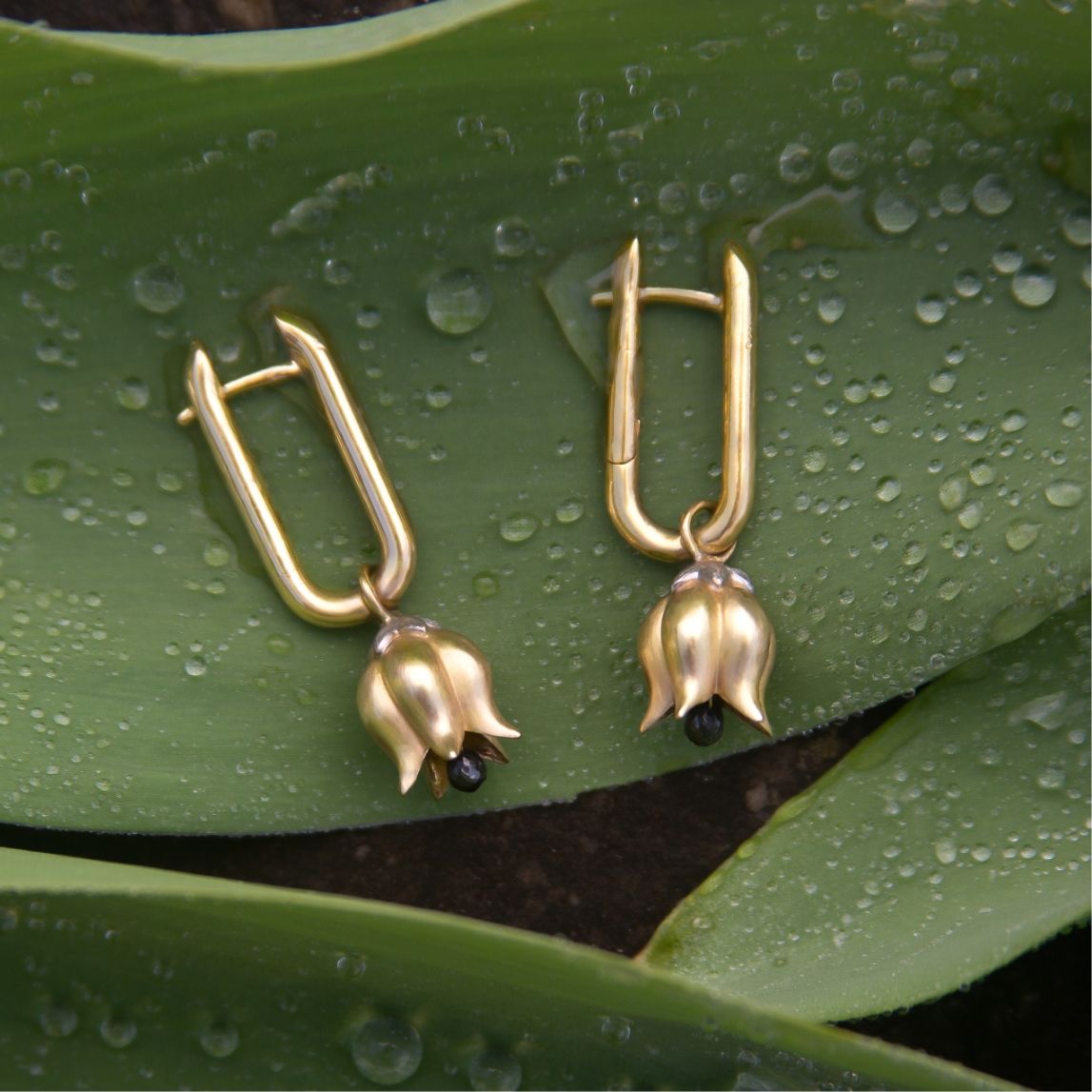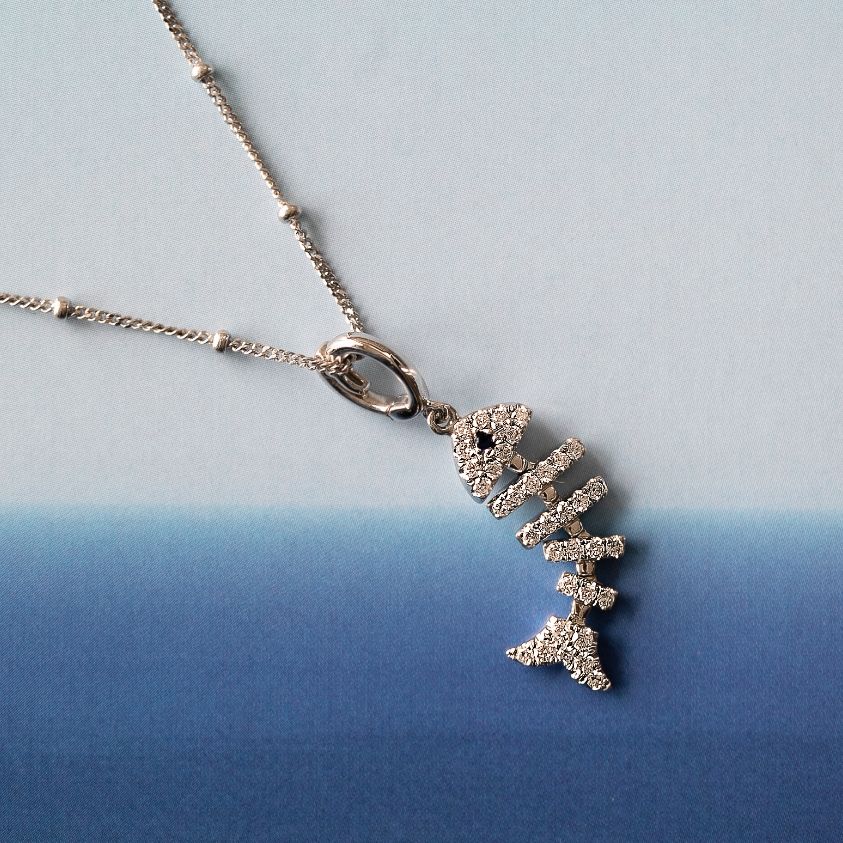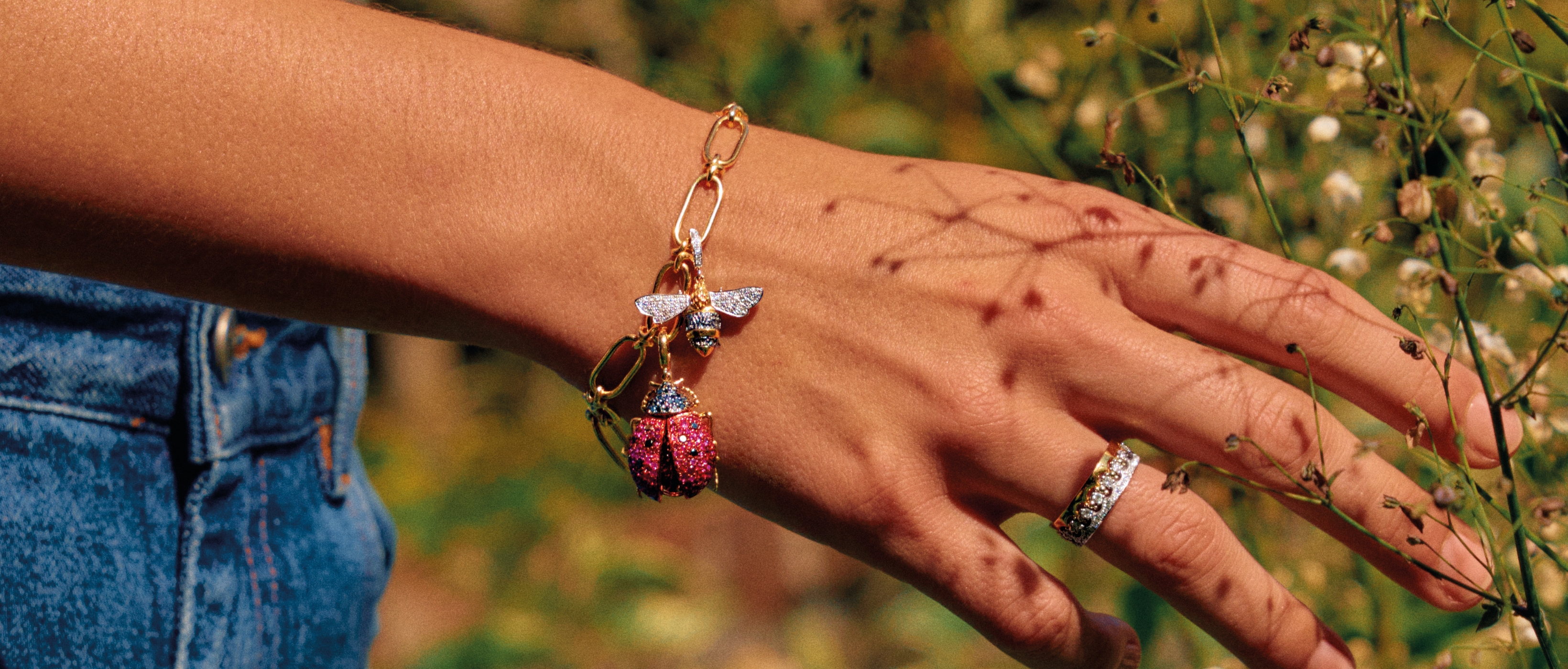
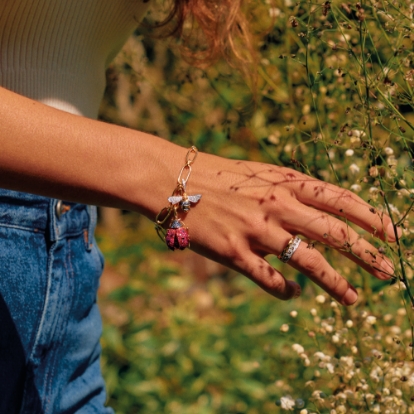
There is something so lovely about watching a lone bee dance across a bed of flowers, collecting and harvesting for the colony. I seem to have an abundance in my garden at the moment and enjoy their gentle presence while I garden.
It is no surprise that the bee is the symbol of endurance, as well as community, undoubtedly linked to their remarkable swarm mentality—communicating through little dances and movement, one telling the next where to find the most rewarding flowers.
I’ve always been fascinated by the perfection of nature and the bee is no exception. The bee was one of the very first pieces I designed—part of my collection, which sits alongside so many other celebrations of natural beauty, such as my and Beetle designs and more recently my Garden Party collection. Time and again, I am constantly drawn back to these highly detailed beings. I find such joy in re-imagining them in 18ct solid gold and precious stones—arguably the only way to make them more beautiful than they are in their natural state.


Bees and the medicinal properties of honey have been celebrated by many cultures throughout history including the Ancient Egyptians, the Sumerians, and the Ancient Greeks.
Raw honey has a bounty of healing benefits, from treating cuts and burns in the form of a salve, to eating it to boost memory, it’s both an antioxidant and rich in nutrients—at the same time as satisfying my sweet tooth. My cousin Shamus, otherwise known as the “honey guru” in a pre Covid world, travels the world to find honeys with active healing properties and his company Necta and Hive have wonderful non pasteurized, cold pressed and completely delicious honeys that can only help boost our immune system. In my opinion it is also far more delicious than Manuka!
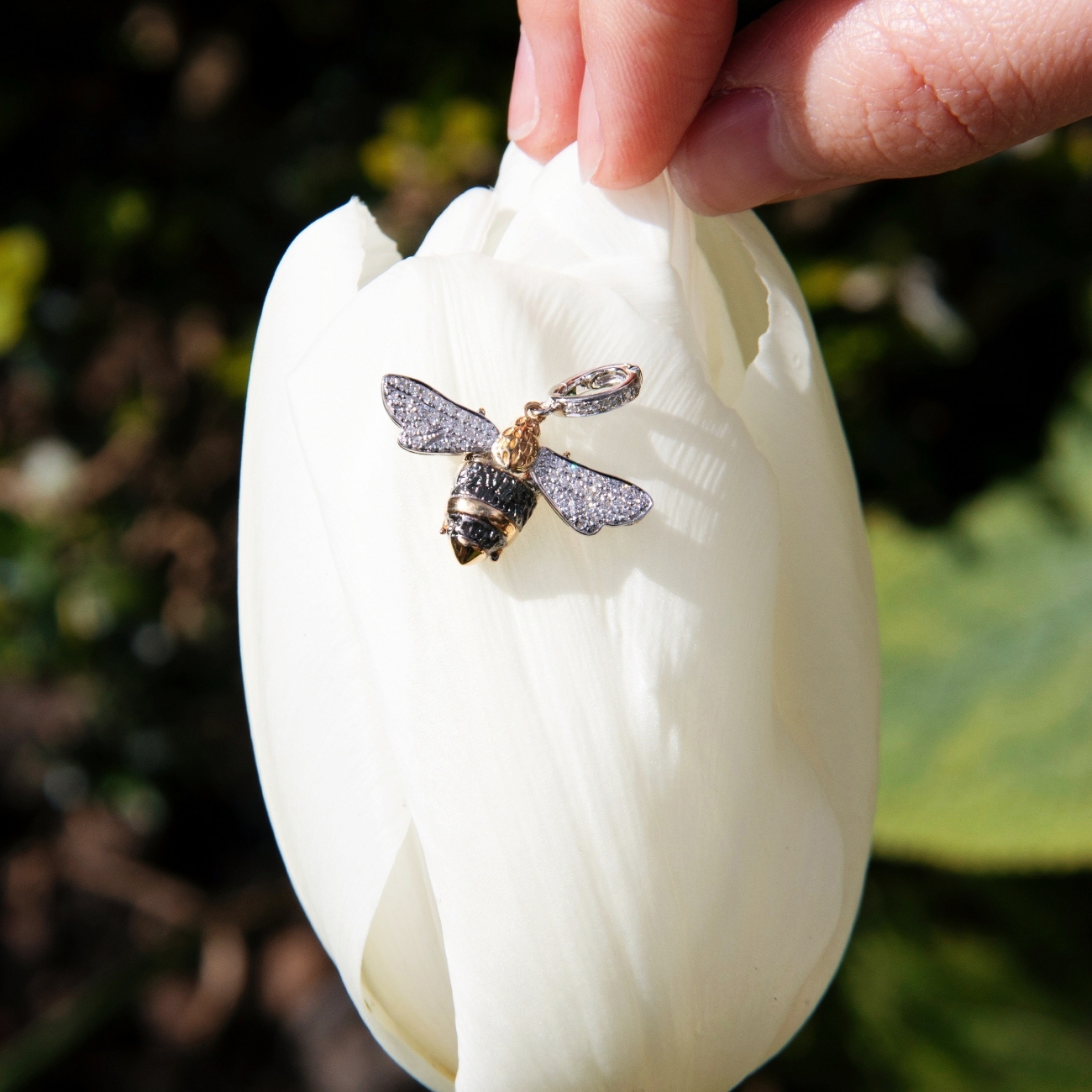
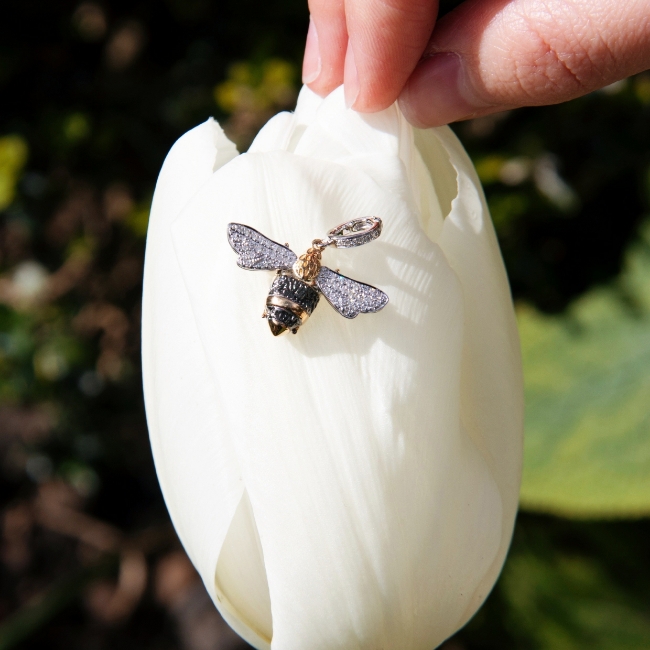
While we have all been preoccupied with the global situation in recent months and its effects on our lives and livelihoods, there are also reports of a similar pandemic for bees. Bees and other pollinators are responsible for one in every three bites of food we eat and yet they are in serious decline. Cultivating any green space we have with bee friendly flowers, along with avoiding chemical pesticides, are two ways we can support this fragile ecosystem.
